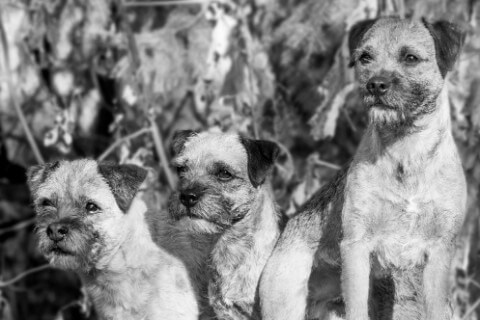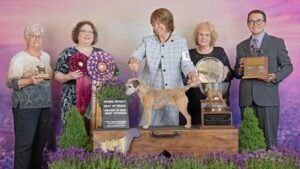
Everything’s Coming Up Rosie’s
Rosie the Border Terrier proves true working ability can thrive in show dogs, excelling in earthwork, conformation, and more.
Home » Meet The Breeds » Border Terrier
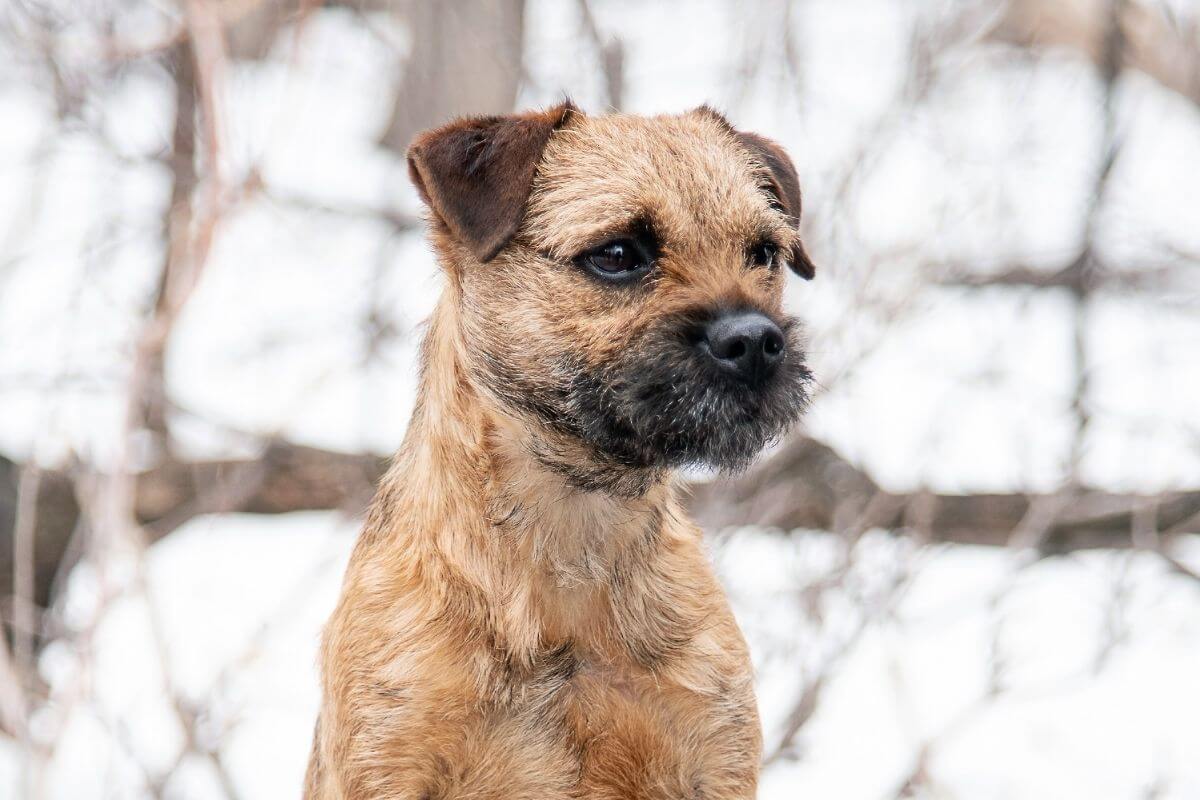
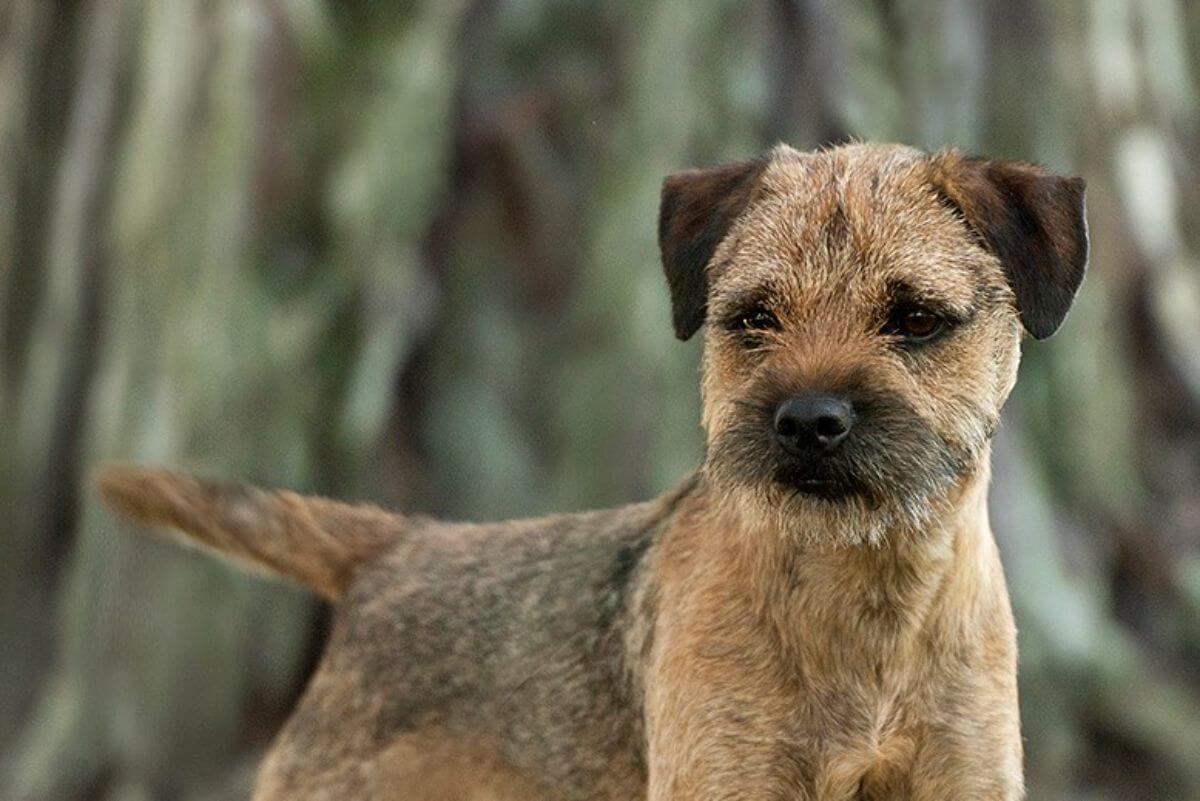

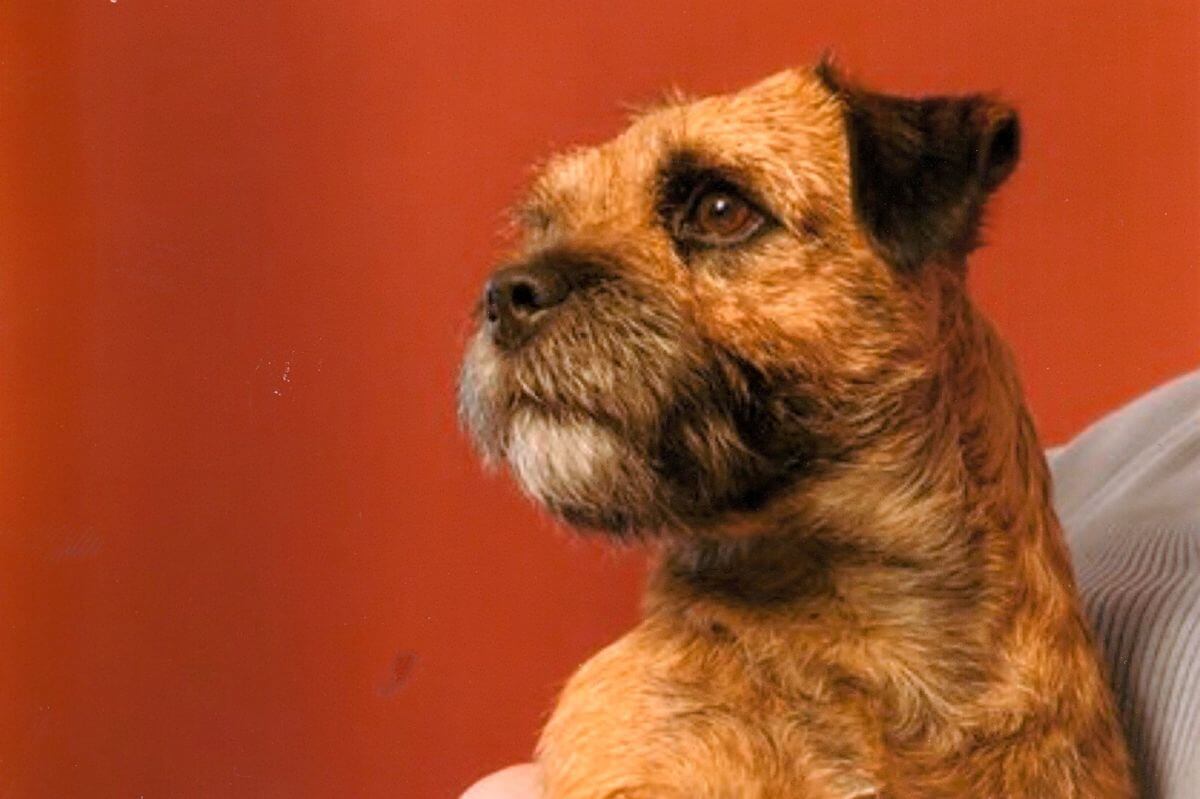
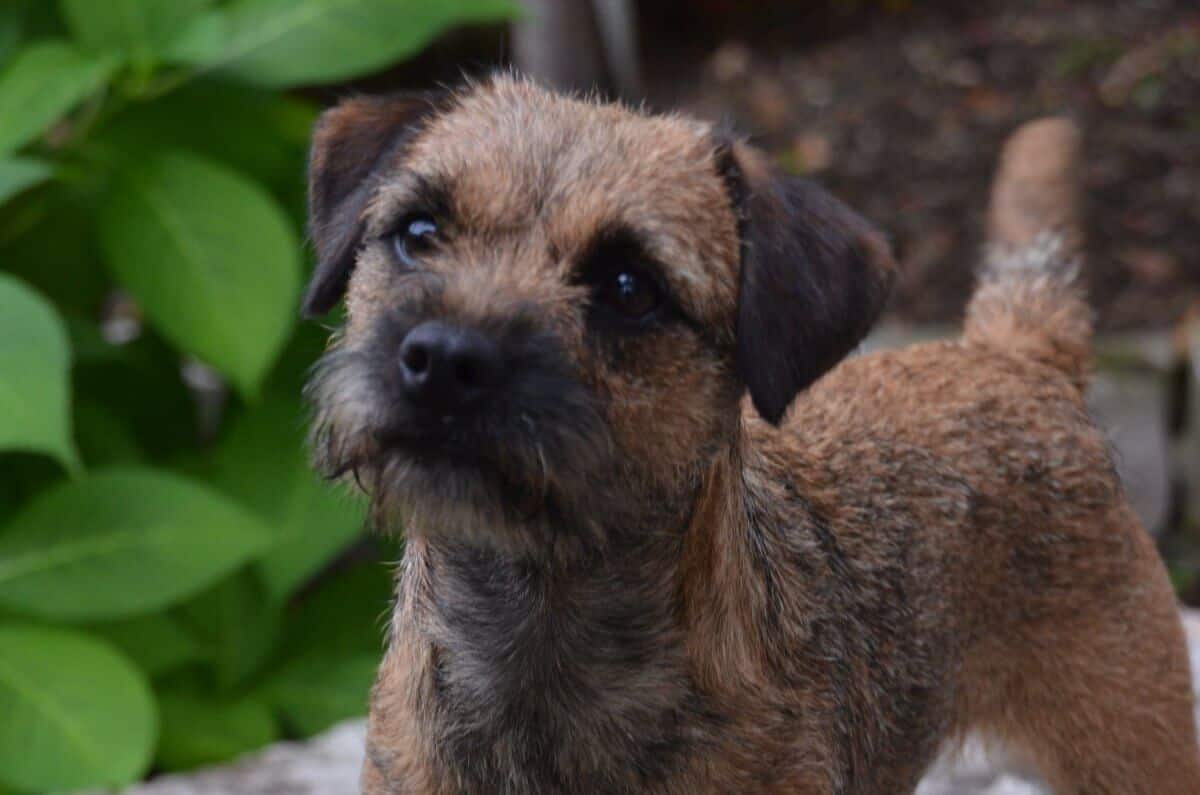
SHOWSIGHT MAGAZINE
The Border Terrier is a true working terrier, built to function both above and below ground. The breed’s physical and mental characteristics support its historical use as a hunter of vermin, badger, otter, and fox. Although the Border does not strongly resemble most other terrier breeds, this good-natured companion is as “game as they come.” The breed’s signature “otter head” is a distinctive breed feature, but it is only one of many. The Border’s legs are long enough to follow a horse yet short enough to allow the dog to “go-to-ground.” Once underground, the dog’s body is long enough to allow it to turn around, and its loose, thick skin and wiry coat prevent serious injury. Fearless on the offensive, the affectionate Border is reasonably obedient in the home, easily trained and endlessly appealing.
Terrier
12 – 15 inches
11.5 – 15.5 pounds
12 – 15 years
| Country of Origin | England, Scotland |
|---|---|
| Bred For | Vermin Hunting, Hunting with Foxhounds, Companionship |
| Known For | Loyalty, Affection, Playfulness |
| Popularity | Moderate |
| Temperament | Affectionate, Game, Good-Tempered |
| Activities | Vermin Hunting, Running, Walking, Conformation Shows, Dog Sports |
The Border Terrier was developed during the 18th century in Northumberland, England, along the border with Scotland. Local farmers and shepherds wanted a game little terrier for controlling predators, and sportsmen wanted a dog with sufficiently long legs for following behind horses. The breed was therefore developed to run with foxhounds and then go-to-ground in pursuit of the quarry.
The terriers that were originally bred to work the moorlands and rocky outcrops around Coquetdale near Rothbury were less distinctive than today’s terriers. The Border Terrier was most probably developed from the same stock that produced both the Bedlington and Dandie Dinmont Terriers. (Some Borders grow a soft topknot of hair similar to these breeds.) The Bedlington was originally known as the Rothbury Terrier, while the Border was called by a number of names, including the Coquetdale Terrier.
Early breeders included William Allen and his son, James Allen, who sold some of their dogs to Mr. Ned Dunn of Whitlea and Mr. James Davidson of Hindlee. Hindlee is perhaps best known as the inspiration for the character Dandie Dinmont in Sir Walter Scott’s novel, Guy Mannering. These breeders initially utilized their dogs to control the foxes that preyed upon local sheep. However, as foxhunting developed into a sport, the dogs were incorporated as an integral part of the hunt.
The Robson family, under the mastership of Mr. John Robson, utilized terriers with their Border Foxhounds. Mr. Jacob Robson, Mr. E. L. Dobson, and Mr. S. Dodd succeeded as masters of the pack, each encouraging the breeding of terriers used to chase foxes and dispatch them underground. Border Terriers were also used by Mr. Tom Robson on otter and badger, running his dogs with the Northern Counties Otterhounds and the Dumfries Otterhounds.
In the 1870s, terriers began to appear on the bench at dog shows, initially as “Any Breed or Variety of British, Colonial or Foreign Dog—not Classified.” The Robson and Dodd families wrote the original Breed Standard as a precursor to the Border Terrier’s full recognition. In 1920, The Kennel Club of England officially recognized the breed, and ten years later the American Kennel Club followed suit.
Adult Border Terriers typically stand between 12 and 15 inches tall at the shoulder, and weigh between 13 and 15.5 pounds for males and 11.5 to 14 pounds for females.
In terms of proportion, the Border Terrier presents a slightly longer than tall silhouette. The height at the withers is slightly greater than the distance from the withers to the tail; approximately 1-1.5 inches in a 14-pound dog. The breed is strongly put together, reflecting both its endurance and agility. The body is deep and fairly narrow, capable of being spanned behind the shoulders. The ribs are deep (not over-sprung) and carried well back. The body’s underline is fairly straight. The forelegs are straight, not too heavy in bone, with small and compact feet. Muscular and racy hindquarters have long thighs, well-bent stifles, well-let-down hocks, and compact feet.
Texture: The Border Terrier has a very thick and loose-fitting skin with a protective double coat. A soft, dense undercoat is overlaid with a wiry topcoat that lies flat to the body. The outer coat’s texture is somewhat “broken,” with no tendency to curl or wave. The coat of this working terrier is relatively easy to maintain. Weekly brushing keeps it neat and clean, and bathing is only required when the coat gets particularly dirty. Seasonal shedding requires the use of a slicker brush to remove the dead hair, and hand-stripping is recommended twice a year to keep the dog looking its best. The coat should never be scissored. Depending on the coat’s length, texture, and thickness, a Border’s natural coat can give the dog an appealing “scruffy” appearance.
| Standard Color | |
|---|---|
| Blue & Tan | ee |
| Grizzle & Tan | ee |
| Red | ee |
| Wheaten | ee |
| Grizzle | n |
| Red Grizzle | n |
| Black Grizzle | n |
| Blue Grizzle | n |
| Red Wheaten | n |
| Red Grizzle & Tan | n |
| Black & Tan | n |
| Black & Red | n |
| Standard Marking | |
|---|---|
| Black Points | n |
A Note About Color: The Border Terrier’s coat may be red, grizzle & tan, blue & tan, or wheaten. Red coats can range from a rich “foxy” red to shades of light or coppery red. Grizzle describes a coat with dark-tipped hairs that give an overlay of color to a red or tan coat. The amount of grizzle can be fairly light overall or extensive. Blue & tan coats and dark grizzle coats are differentiated by the undercoat; blue & tan dogs have a black undercoat. Wheaten dogs are a clear, light tan. Puppies are typically born dark (except for blue & tans) and it can be difficult to predict the coat’s adult color. Black points in the form of dark ears and a dark muzzle are characteristic of the breed. A small amount of white is only allowed on the chest. White on the feet is not acceptable. In all coat colors, a ring of coarse silver-based hair on the tail is usually found about one-third the distance from its base.
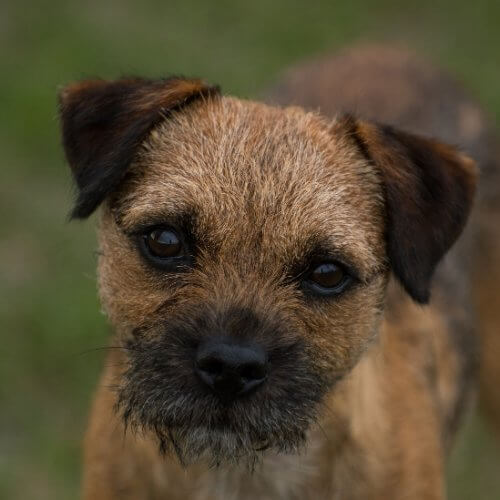
The tail of the Border Terrier enhances the breed’s moderate appearance. It is thick at the base, tapering towards the tip, and set on not too high. When the dog is alert, the tail is carried gaily. In repose, it relaxes and may drop. The tail should not be long, low set, or carried over the back.
When considering the Border Terrier as a companion, prospective owners should be prepared for a dog that is easily trained but “game as they come.” These good-natured dogs require a secure home and yard to keep them safe, and regular activity to keep them engaged.
The Border Terrier is considered a relatively healthy breed. Responsible preservation breeders health test their dogs to minimize the risk of a disease being passed from parents to puppies. However, individual dogs are not immune to health problems, so early detection and management are important aspects of care.
In general, the Border Terrier’s average lifespan ranges from 12 to 14 years.
Although the Border Terrier is a typically robust breed, individual dogs may be susceptible to certain health conditions. Consequently, owners should be aware of the following issues that can affect the breed:
Other conditions that have been reported in individual Border Terriers include Gallbladder Mucocele GBM), Idiopathic Epilepsy, and Paroxymal Dyskinesia. Responsible breeders who have experienced a disorder that has affected their dogs will be forthcoming with all health records. Additionally, regular veterinary check-ups can detect a condition early on, providing treatment options that can manage pain and foster recovery.
The Border Terrier is an active breed, renowned for its fearless and affectionate personality. This determined dog can be a joy to have a round, but it is not the best choice for everyone. It’s important to speak with responsible breeders and spend time with their dogs before committing to caring for one of these working terriers.
Borders do enjoy attention from their favorite people, but they don’t seek it constantly. As they go about their daily activities, they typically like to check in every once in a while. Although they are not noisy dogs, they will definitely alert to a stranger at the door or an errant squirrel in the yard. And at the end of a busy day, they typically like nothing more than to cozy up for some television viewing before bedtime.
While Border Terriers are generally good with children, they should be properly introduced to make sure everyone can get along. Puppies are extremely active and can get into trouble in the blink of an eye, so all interactions should be carefully monitored. Although most Borders are trusting and eager to please, they are sensitive too. So, rough treatment can have a negative effect on the dog’s inherently trusting nature.
Border Terriers love to eat as much as they love keeping busy. To maintain their waistlines, it’s important to feed a balanced diet on a regular schedule. Overfeeding can lead to obesity, which is particularly harmful to smaller dogs. Treats should be low calorie and offered only sparingly, preferably as a positive reward during training sessions.
For puppies, a diet rich in high-quality, easily digestible protein is vital for healthy development. Pups should be fed small, frequent meals that support their rapid growth phase without overburdening their digestive system. Transitioning to adult food should occur at around one year of age. Mature Borders will typically need anywhere from 1/2 to 1 cup of high-quality dry food per day, divided into two meals.
Hydration is just as crucial as nutrition, especially for such an active breed. It’s important to provide puppies and adult dogs with access to fresh water throughout the day, especially after intense activity and during the months of warmer weather and increased humidity.
When it comes to training a Border Terrier, it’s important to set reasonable expectations. Early socialization is key for getting a puppy to associate learning with a reward. As the pup grows, treats, praise, and gentle caresses can be used to support the little one’s progress.
Training a Border Terrier, however, can present a unique set of challenges. Although the breed is typically easygoing (for a terrier) and willing to please, these dogs do have a mind of their own and like to think for themselves. Understanding these traits is key to any training regimen.
Since the Border Terrier loves being outside, distractions can make outdoor training sessions particularly challenging. The breed has a healthy prey drive and likes to wander, so it’s important to train only in areas that are reliably secure. Thankfully, the desire to roam can sometimes be mitigated by offering tasty morsels as a reward for good behavior.
Daily exercise is essential for the Border Terrier’s physical health and mental well-being. As an energetic and active breed, these dogs like to stretch their legs and have a good time. Providing space for them to run will help to stimulate their minds and exercise their bodies.
| Energy Level | Moderate |
|---|---|
| Exercise Requirements | 1 Hour/Day (Minimum), Daily Walks, Vigorous Running, Regular Exercise, Mental Stimulation |
Border Terriers also enjoy regular walks and play sessions. A stroll around the neighborhood allows the dog to explore its environment, keeping its senses engaged. While indoors, interactive games, puzzle toys, and short training sessions can channel the dog’s energy and prevent destructive behaviors that can result from boredom.
Despite the breed’s smaller size, Border Terriers are “hard as nails” when it comes to participating in various dog sports. Agility, Barn Hunt, Earthdog, Flyball, Nosework, and Tracking are just some of the organized activities that allow these dogs to have fun and stay fit. During the “off season,” a fenced yard can provide a safe space to exercise.
Grooming is an essential aspect of caring for a Border Terrier, impacting both the dog’s appearance and its health. While these dogs are not excessively high-maintenance, their grooming routine should be consistent and thorough enough to identify any underlying skin or health issues early on.
| Coat Type | Short, Dense, Wiry |
|---|---|
| Grooming Requirements | Weekly Brushing, Occasional Bathing, Monthly Nail Trimming, Weekly Tooth Brushing |
Border Terriers are not as high maintenance as some of the other terrier breeds. However, they are not exactly carefree when it comes to coat care. Their grooming routine needs to be consistent, with weekly brushing needed to keep the coat looking its best. Bathing should only be needed when the dog gets especially dirty.
The coat of the Border Terrier sheds to some degree. To remove all of the dead hair and preserve the coat’s wiry texture, hand-stripping is necessary. This process is typically performed twice a year. It should be noted that clipping the coat will only shorten the length; it doesn’t remove the dead hair. A coat that is hand-stripped will typically grow back in 8 to 10 weeks.
Living with a Border Terrier can be a fun-filled experience, but it does come with certain responsibilities. The breed’s free and agile stride allows these dogs to travel far and wide, so outdoor activities need to take place in a fenced yard or on a reliable collar or harness. Be forewarned, these functional terriers like to roam!
Since the breed was developed to hunt in packs, the typical Border Terrier is less dog-aggressive than most other terrier breeds. In fact, these dogs enjoy the company of other dogs as much as they appreciate the companionship of their human family. Typically, they are affectionate in the home and fearless in the face of a foe.
Border Terriers are easily trained, provided the methods support the breed’s inherent good nature. Although they are bold hunters, they are also companionable and respond best to instruction that is clear. With proper training and adequate exercise, these dogs can provide endless enjoyment for people who enjoy a loyal, affectionate, and capable canine companion.
Bringing a litter of Border Terrier puppies into the world is an exciting event that supports the preservation of this unique breed. It also demands a commitment that requires preparation and understanding of each puppy’s specific needs during its early development.
When caring for a Border Terrier puppy, it’s important to provide a safe, nurturing environment for the little one. From the moment the first pup arrives in its new home, it’s essential to establish a routine that includes regular feeding and potty breaks as well as a sleep schedule. Consistency in these areas will aid in housebreaking and helps the pup feel secure in its new surroundings.
Feeding a high-quality diet formulated for small breed puppies is essential to support the pup’s rapid growth and energy needs. It’s important to follow the recommended feeding guidelines and refrain from giving treats except during short training sessions.
Socialization is another important aspect of puppy care. Exposure to various people and animals in safe environments can encourage confidence and prevent fearfulness or aggression later in life. Early socialization and positive training methods are the foundation for good behavior.
Regular veterinary check-ups are vital during the Border Terrier’s first year. Each appointment allows the puppy’s growth to be monitored and ensures all vaccinations and deworming medications are administered. Additionally, implementing a routine grooming regimen early on can acclimate the pup to being handled and sets the course for maintaining good overall health throughout the dog’s lifetime.
Border Terriers are active and agile dogs with a keen intelligence, making them well-suited for a variety of activities and dog sports. Engaging these working dogs in a sport not only taps into their natural instincts, it also provides an outlet for their considerable energy and enthusiasm.
These activities and others can provide Border Terriers with both mental and physical engagement, helping to alleviate boredom and modify any behavioral issues. Participation in dog sports also offers great opportunities for socialization with other dogs and their owners.
The Border Terrier is recognized by the world’s leading registries and kennel organizations, which categorize the breed into a specific Group based on its unique characteristics. This breed is recognized worldwide under the following Group designations:
| Organization | Group Designation |
|---|---|
| AKC (American Kennel Club) | Terrier |
| UKC (United Kennel Club) | Terrier |
| CKC (Canadian Kennel Club) | Terriers |
| ANKC (Australian National Kennel Council) | Terriers |
| RKC (The Royal Kennel Club) | Terrier |
| FCI (Fédération Cynologique Internationale) | Group 3: Terriers; Section 1: Large and Medium Sized Terriers |
The ideal Border Terrier is described by a Breed Standard that is approved by each of the world’s leading registries and kennel organizations. The Breed Standards for this breed may be found in the following links:
| Organization | Breed Standard |
|---|---|
| American Kennel Club | AKC Border Terrier Breed Standard |
| United Kennel Club | UKC Border Terrier Breed Standard |
| Canadian Kennel Club | CKC Border Terrier Breed Standard |
| Australian National Kennel Council | ANKC Border Terrier Breed Standard |
| The Royal Kennel Club | RKC Border Terrier Breed Standard |
| Fédération Cynologique Internationale | FCI Border Terrier Breed Standard |
Border Terrier Clubs play an important role in bringing together breed enthusiasts, offering a social network for supporting education, camaraderie, and breed advocacy. These organizations are crucial for promoting all aspects of the breed, organizing social and competitive events, and supporting breed-specific research and rescue efforts.
The Border Terrier Club of America (BTCA), founded in 1949, is the central organization for anyone who has a passion for the breed in the United States. The club holds many events throughout the year, including specialty shows and educational seminars that foster a sense of community and shared purpose among its members.
In the United Kingdom, the Border Terrier Club is one of the oldest breed clubs. Founded in 1920, its members are committed to promoting the breed through shows, seminars, and health initiatives, all aimed at supporting the welfare of this decidedly British breed.
Membership in these Border Terrier clubs offers numerous benefits, including access to information, participation in events, and opportunities to connect with other devotees of the breed. These organizations also play a critical role in breed advocacy, supporting ethical breeding practices and educating the public on the breed’s unique characteristics and needs.
Dedicated rescue organizations operate to rehabilitate and rehome any Border Terrier in need. The volunteers who support these groups are quick to act whenever there’s a need, providing a world-weary Border with a second chance at finding a forever home.
In the United States, North American Border Terrier Welfare, Inc. is a well-regarded organization that’s committed to the breed’s welfare. The group faithfully rescues Borders from shelters, pounds, and homelessness caused by the illness or death of an owner, ensuring each dog finds a new, happy home.
For those who may be thinking about a Border Terrier as a family companion, these groups, along with the breed clubs, can facilitate placement of a dog with someone who is willing and able to care for a lovable Border with a questionable past.
Border Terriers can be excellent pets in the right environment. The breed’s smaller size and affectionate personality can make these dog’s a great companion for families, singles, and seniors alike. Borders are typically anxious to please, though they can be independent-minded and don’t care to be left alone for extended periods.
No dog is truly hypoallergenic, including the Border Terrier. However, this breed is considered to be a relatively minimal shedder, which might make the Border a suitable choice for people with mild allergies. Regular grooming can help to minimize shedding and dander, but it’s always best to spend time with the breed if allergies are a concern.
Border Terriers do shed, but the coat loss is relatively minimal compared with that of many other breeds. The coat requires regular grooming to stay clean and healthy. This also helps to reduce the amount of hair that’s shed on clothing and upholstered furniture. Weekly brushing is usually sufficient to keep the shedding under control.
Border Terriers typically enjoy a long lifespan, often living between 12 and 14 years. With regular veterinary check-ups, a nutritious diet, and adequate exercise, these terriers can enjoy a long and vibrant life. This longevity is a testament to the breed’s strength and endurance.
The look and shape of the Border Terrier’s head is thought to resemble that of an otter. The qualities of the skull and muzzle give an “ottery” look that is unlike that of any other breed of dog. This otter head is considered a hallmark of the breed.
Because Border Terriers were bred to hunt in packs, they are not typically aggressive. In fact, they are known for being friendly and affectionate with just about everyone. However, as with any dog, individuals can develop behavioral issues without proper training and early socialization.
Border Terriers typically have a strong appetite and can be prone to overeating. It’s essential, therefore, to feed a balanced diet in appropriate portion sizes and avoid giving too many treats in between meals. Regular exercise and a diet that’s based on a dog’s age and activity level will help to maintain good weight and overall health.
Border Terriers can be vocal, but they don’t bark excessively. They typically alert their human companions to anything unusual, making the breed an excellent choice as a watchdog. Proactive training and regular exercise can help to prevent chronic barking.
Yes, Border Terriers generally enjoy a good run. Because they were bred to cover great distances, these dogs need ample space where they can safely stretch their legs daily. Fenced areas must be secure enough to prevent them from climbing, digging, or otherwise escaping.
Border Terriers were originally bred for hunting the fox, badger, and otter. They were developed from the same stock that produced the Bedlington and Dandie Dinmont Terriers. Eventually, Borders were used to run behind horses and foxhounds, following the quarry into their underground dens. The breed remains a companionable canine that retains all of its ancestors’ gameness in the field.
Where Champions Are Celebrated! | Est. 1992.

Rosie the Border Terrier proves true working ability can thrive in show dogs, excelling in earthwork, conformation, and more.
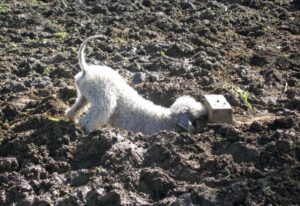
NATIONAL EARTHDOG TESTS hosted by the Bedlington Terrier Club of America, Monday (Columbus Day) October 10, 2022. Ev-ry Place, LLC., 1333

Peter Holson is the breeder of Mchill’s Border Terriers. Read about the kennel’s beginnings, the dogs, the puppies, and much more.
The best way to ensure a long and happy relationship with a purebred dog is to purchase one from a responsible breeder. Not sure where to begin?
Contact the National Parent Club’s Breeder Referral Program, which is listed on the AKC Breeder Referral Contacts page.
